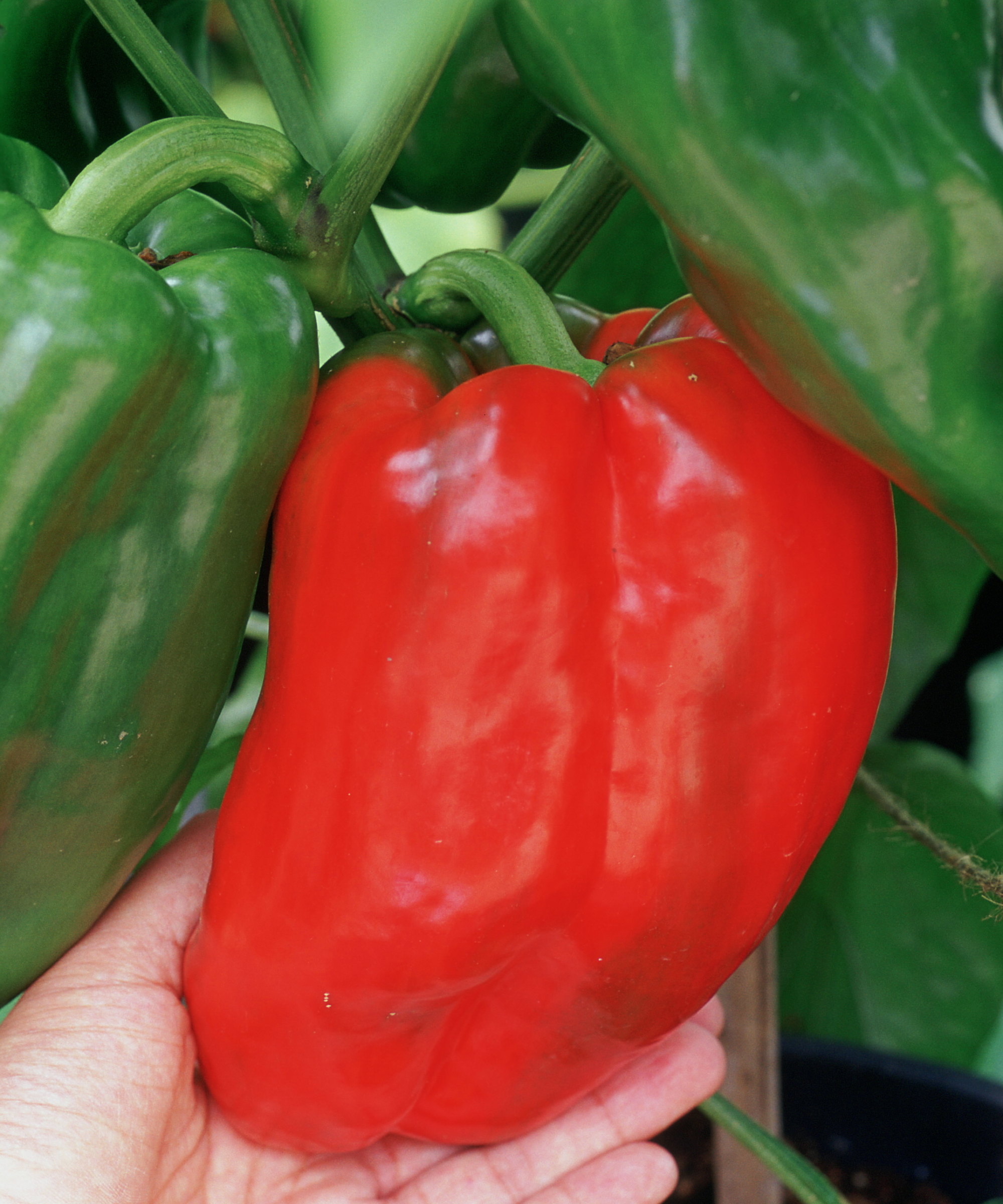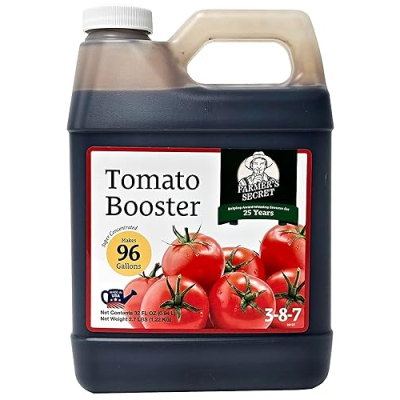Fertilizing bell peppers is vital for vigorous plants and rich harvests – discover exactly when to feed and the best products to use
Experts reveal what makes a perfect feeding regime for bell peppers


Bell peppers are popular crops to grow at home and have many potential uses, from being chopped and eaten raw in salads to being cooked in a plethora of dishes. As one plant can produce between five and 10 peppers, it requires regular feeding throughout the season.
The crop needs warmth and rich soil to thrive, plus lots of nutrients for healthy growth. Giving plants the nutrients they need means they develop a rich bounty of peppers, which, depending on the variety, can come in shades of green, yellow, orange, and red.
When you grow bell peppers, feeding isn’t a once-and-done deal. Your plants do need feeding at certain key times, and their nutrient requirements shift during the season. It need not be confusing, though, so this guide looks at when and how to fertilize bell peppers to help you get the best harvests.

When and how to fertilize bell peppers – start with the soil
Bell peppers are heavy feeders, and as with fertilizing chili pepper plants, they benefit from regular applications of feed throughout the growing season for the best harvests.
However, before you even plant the vegetables, it is important to do a soil test to understand the nutrients in your soil and identify any deficiencies. Understanding your soil and its nutrient make-up helps avoid plants getting too little or too much of any particular nutrients.
It can be as simple as using a soil test kit like this one on Amazon to provide lab analysis feedback on 13 nutrients in around a week.
When to fertilize bell peppers

The first opportunity to fertilize bell peppers occurs when you pot up seedlings. If you sow seeds indoors in trays, modules, or small pots, they will need potting up into larger containers before being planted.
Design expertise in your inbox – from inspiring decorating ideas and beautiful celebrity homes to practical gardening advice and shopping round-ups.
At this stage, you can fertilize seedlings by mixing some slow-release feed into your potting mix. However, check beforehand to see if your potting mix already contains feed.
An ideal soil for bell peppers is supplemented with organic matter, including compost or well-rotted manure, before planting. This offers two-fold benefits, providing essential nutrients to the plants and helping retain moisture in the soil.
From the moment it comes to transplanting seedlings into the vegetable garden, there are a few key timings to fertilize bell peppers that will guarantee healthy plants and a bumper crop of bell peppers to pick.
'Feed after transplanting, and again at the pre-flowering and fruit-setting stages,' recommends Robin Phelps, an experienced grower and the gardening and preserving coach for Sow Many Plants.
'These phases demand nutrients to support foliage and the transition to fruit production.'
The key take-home points are to fertilize bell peppers a few weeks after planting, then regularly feed the plants once they begin flowering. A consistent feeding regime like this provides essential nutrients for developing and ripening fruit while helping to avoid issues such as blossom end rot.

Robin Phelps is a Gardening and Preserving Coach, with a passion for nurturing green spaces and preserving the bounties of nature. With over 20 years of experience in gardening, Robin began her journey in a small apartment with a balcony and has since expanded to growing on 3 acres. She has evolved into an expert gardener and is eager to guide others on their gardening journey.
How to fertilize bell peppers

Now you understand when to fertilize bell peppers, the next important step is to know what types of feed to use at the different stages.
Before feeding, ensure you understand the plant fertilizer numbers on the packaging. Any products in-store or sold online will feature the nutrient make-up of nitrogen (N), phosphorus (P) and potassium (K) in the form of three numbers, showing how much of each nutrient it contains. For example, a balanced feed would show 10-10-10.
Check a product’s ratio to ensure it fits the needs of your plants, and always apply at the recommended rate to avoid overfertilizing plants. It is also important to remember that any soil type with compost or other organic matter added before planting will require less fertilizer during the season.
To fertilize bell peppers in particular, use a balanced fertilizer with an NPK of 10-10-10, 5-5-5, or similar after transplanting young plants. Any feed must be well-balanced and deliver all the essential nutrients bell peppers need to develop healthily. At this stage, granular fertilizers are better than liquid ones as they release their nutrients slowly and allow plants to benefit over an extended period.
However, the nutrient requirements shift once the plants start flowering, and so does the best fertilizers for bell peppers.
At this stage, switch to a product with less nitrogen and more phosphorus and potassium, so the latter two numbers will be higher. This switch ensures the plant focuses on producing fruits. As Robin Phelps explains: 'Reduce nitrogen slightly to encourage bigger, sweeter fruits.'
Experts from Michigan State University recommend 'fertilizers of a 1-2-2 ratio, such as 5-10-10 or 8-16-16'. Robin Phelps also advocates for 5-10-10 while offering an alternative ratio of 4-8-12 for use at this stage.
The best fertilizer for bell peppers at this point is often a fast-acting liquid feed, usually one designed for growing tomatoes or other vegetables, that is applied every few weeks to help the plant develop and ripen peppers.
Avoid using high-nitrogen fertilizers once the plants start flowering, as it is a fertilizing mistake that encourages vigorous green growth. The result is a plant with lots of foliage, weak stems, and little in the way of fruit production.
Shop products to fertilize bell peppers
FAQs
Is Miracle-Gro good for bell peppers?
There are Miracle-Gro products you can use to fertilize bell peppers. It includes this organic all-purpose plant food from Amazon, which can be used after transplanting, and this water-soluble tomato plant food at Walmart can be used to feed peppers every few weeks once they are flowering.
What is the best homemade fertilizer for pepper plants?
If you want to make a plant fertilizer for peppers, there are three great options at your disposal. One is to make your own homemade compost, and I would also recommend making comfrey fertilizer, as it is rich in phosphorus and potassium to develop fruits, and contains calcium to prevent blossom end rot.
Robin Phelps, gardening and preserving coach for Sow Many Plants, recommends using Epsom salts to fertilize bell peppers. You can make a foliar spray by mixing two tablespoons of Epsom salt in a gallon of water, and Robin advises: 'Spraying pepper plants every 2–3 weeks can improve fruit size and prevent deficiencies that stunt development.'
As growers strive for healthy plants and the best fruits, pepper companion planting always comes highly recommended.
Companion planting reaps the rewards of natural benefits that different vegetables, herbs, and flowers offer each other. The benefits include deterring pests, attracting beneficial insects, and encouraging pollinators to boost your yield.
Some of the best companion planting partners for bell peppers include planting onions and marigolds to deter lots of pests, while many gardeners claim growing basil nearby boosts the growth of pepper plants.

Drew has worked as a writer since 2008 and was also a professional gardener for many years. As a trained horticulturist, he worked in prestigious historic gardens, including Hanbury Hall and the world-famous Hidcote Manor Garden. He also spent time as a specialist kitchen gardener at Soho Farmhouse and Netherby Hall, where he grew vegetables, fruit, herbs, and cut flowers for restaurants. Drew has written for numerous print and online publications and is an allotment holder and garden blogger. He is shortlisted for the Digital Gardening Writer of the Year at the 2025 Garden Media Guild Awards.


